Published 12:51 IST, November 27th 2024
Expose: Pakistan’s Terrorism Infrastructure — An Anatomy of State-Sponsored Extremism
Pakistan’s involvement in terrorism is a systemic strategy driven by its geopolitical ambitions and ideological goals.
- Defence
- 5 min read
Pakistan's Role as a 'Terror Factory'
Islamabad, Pakistan - Pakistan’s association with terrorism is not incidental but systemic, rooted in its geopolitical ambitions and ideological narratives. For decades, the Pakistani establishment—primarily the ISI—has leveraged terrorism as an asymmetric tool of warfare, targeting India and destabilizing South Asia. The impact of this strategy transcends borders, contributing to global instability. This report uncovers Pakistan's role as a "terror factory," analyzing its operational framework, recruitment strategies, weapon supplies, and the impact of its actions in 2024.
PART 1: A Timeline of Bloodshed—Major Attacks with Pakistani Roots
The ongoing wave of terror in India, especially in Jammu and Kashmir, is far from isolated. These incidents are part of a decades-long strategy where the ISI orchestrates terror strikes via proxies like Lashkar-e-Taiba (LeT), Jaish-e-Mohammed (JeM), and Hizbul Mujahideen (HM). Below is a chronological account of major attacks:
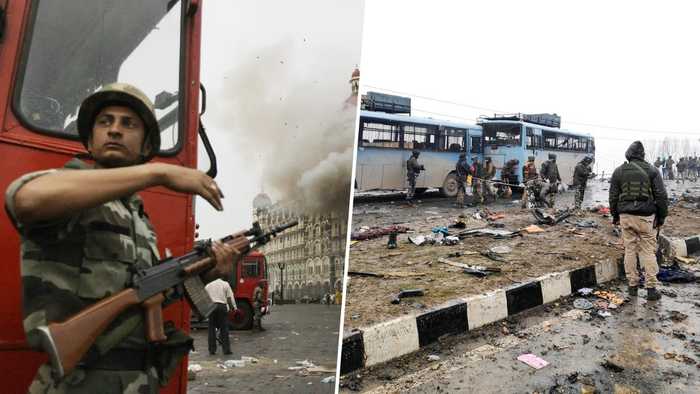
- Mumbai Terror Attacks (2008)- A defining moment in global counterterrorism history, the attack was carried out by LeT operatives trained and directed by ISI handlers. Over 166 people were killed in a three-day siege.
- Hyderabad Bombings (2013)- Twin blasts killed 17 civilians. Investigations revealed the involvement of Indian Mujahideen (IM) operatives working under the aegis of LeT, headquartered in Pakistan.
- Pathankot Airbase Attack (2016)- JeM infiltrators, trained in Pakistan, attacked a strategic airbase, resulting in the deaths of seven Indian soldiers.
- Pulwama Suicide Bombing (2019)- A JeM operative carried out one of the deadliest attacks on Indian soil, killing 40 CRPF personnel in a single blow. The attacker and his handlers were traced back to Pakistan.
- 2024: A Year of Terror- This year alone, attacks in Reasi, Sonamarg, and the Z-Mor Tunnel highlight Pakistan's renewed push to destabilize Jammu and Kashmir.
PART 2: The Terror Factory—How Pakistan Manufactures Terrorism
Recruitment and Radicalization
One of the most insidious elements of Pakistan’s terror strategy is the recruitment of youth from impoverished and disillusioned backgrounds. Young men are lured with promises of religious glory, financial rewards, and social honour. Two prominent examples from 2024 are:
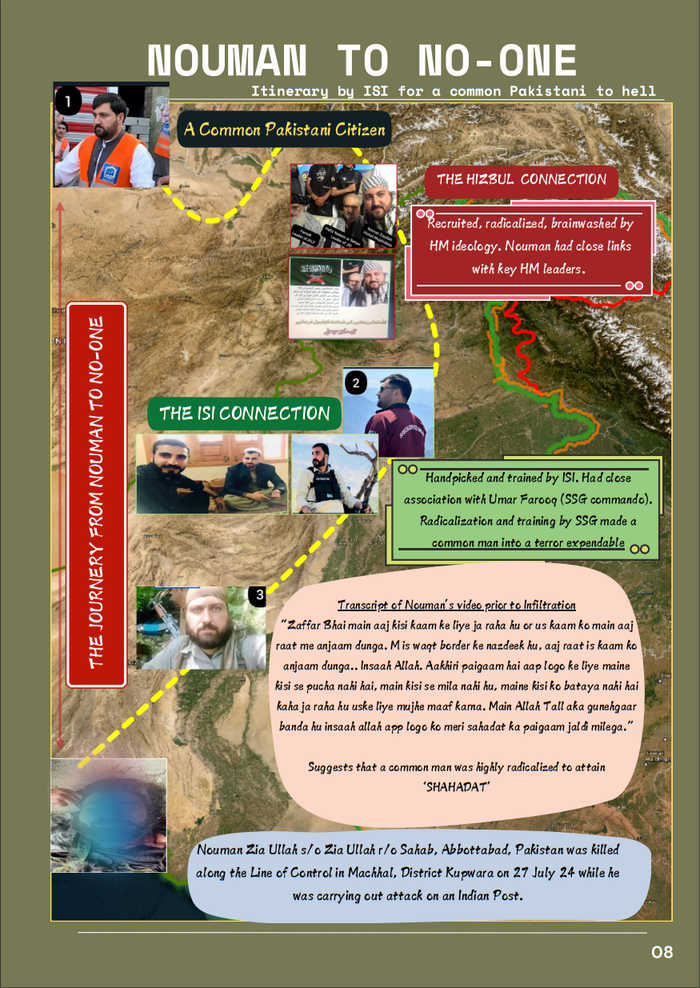
Nouman Zia Ullah: A common citizen from Abbottabad, Nouman was recruited by ISI and trained by Hizbul Mujahideen. Before his death during an infiltration attempt, his video message revealed the depth of his brainwashing, with themes of martyrdom and jihad dominating his narrative.
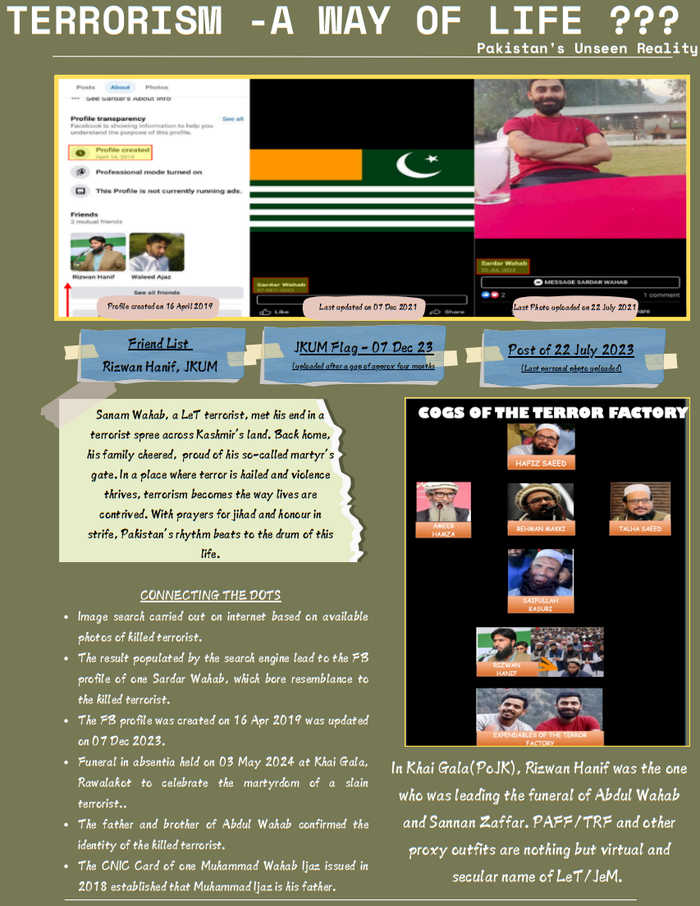
Abdul Wahab: Radicalized and trained by LeT handlers, Wahab was killed in Sopore, leaving behind a family proud of his "martyrdom"—a disturbing example of societal normalization of violence.
Training Infrastructure
Pakistan hosts a network of terror training camps in areas like Pakistan-occupied Kashmir (PoK) and Federally Administered Tribal Areas (FATA). These facilities provide:
- Guerrilla Warfare Training: Lessons in ambush tactics, infiltration, and the use of explosives.
- Weaponry Training: Use of advanced rifles, grenades, and IEDs, often sourced through illegal markets like Darra Adam Khel.
- Ideological Indoctrination: Recruits are subjected to propaganda emphasizing anti-India rhetoric and religious extremism.
Arming the Terror Network
In 2024, Indian security forces recovered a range of sophisticated weapons during counterterror operations:
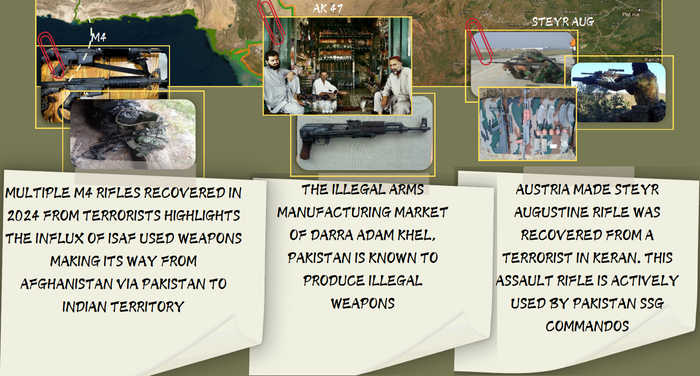
- Steyr AUG Rifles: Typically used by Pakistan's Special Services Group (SSG), these rifles signify state-level support.
- M4 Carbines and AK-47s: Smuggled via Afghanistan and supplied to terror operatives in J&K.
- Explosives and IEDs: Manufactured in Pakistan and designed for maximum casualties. This steady influx of arms underscores the scale and sophistication of Pakistan's logistics.
Communication Networks
Modern terrorism relies heavily on secure communication channels, and Pakistan-backed groups have adapted accordingly:
Radio Sets and Encryption Devices: Pakistani-made VHF radios and Chinese encryption tools have been recovered.
Apps and Digital Tools: Platforms like Telegram, Zangi, and Psiphon are exploited to coordinate attacks, share data, and navigate infiltration routes.
PART 3: Financial Foundations of Terror
The funding of terror networks involves a complex web of illicit activities:
Narcotics Trade: Pakistan uses its narcotics networks to fund operations, with Afghanistan’s poppy cultivation playing a significant role.
Counterfeit Currency: Fake Indian currency notes (FICN) originating in Pakistan serve to both finance terrorism and destabilize India’s economy.
Hawala Transactions: Money laundering through informal networks ensures a steady flow of funds to operatives on the ground.
PART 4: Victims of Violence—Human Stories from 2024
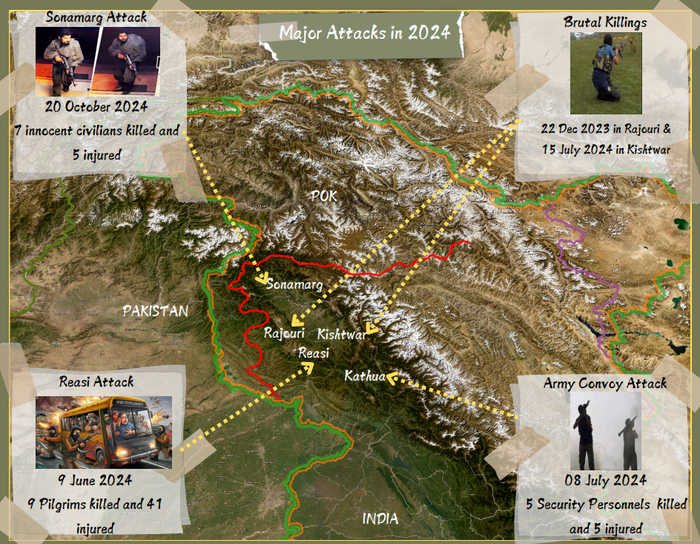
Ganderbal Attack:
Non-local workers engaged in infrastructure projects were brutally attacked in Ganderbal. Families of victims recount tales of shattered dreams and economic despair, as sole breadwinners were lost to senseless violence.
Rajouri Beheadings:
Pakistan-sponsored terrorists executed captured Indian soldiers in a gruesome manner designed to provoke outrage and instil fear. These actions highlight the inhumanity of the terror networks operating under Islamabad’s watch.
PART 5: Global Implications and the Role of FATF
Pakistan’s temporary removal from the FATF grey list in 2022 was a diplomatic victory, but its actions since then have betrayed its commitments to counterterrorism.
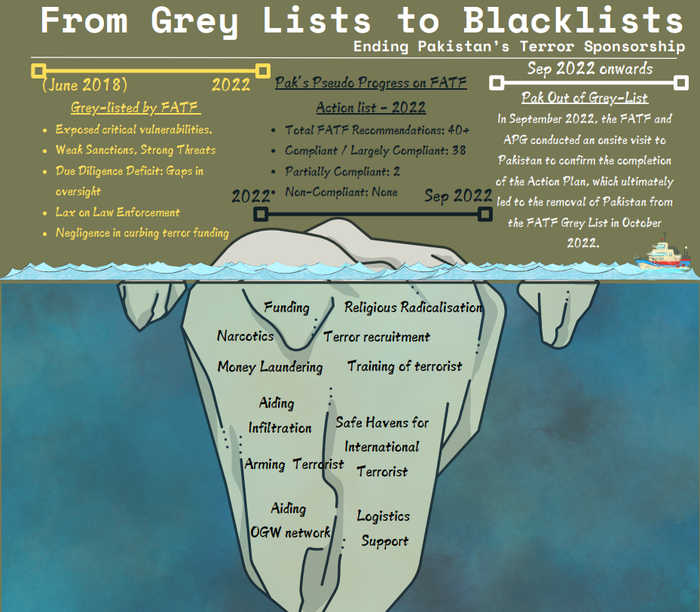
Key recommendations for international action include:
- Blacklist Consideration: Pakistan’s continued support for terrorism justifies its inclusion on FATF’s blacklist.
- Targeted Sanctions: Freeze assets and impose trade restrictions on entities linked to terror financing.
- Enhanced Monitoring: Establish a regional coalition for surveillance and intelligence sharing.
PART 6: The Way Forward—A Call for Global Accountability
Counterterrorism Framework
India’s counterterrorism efforts, though commendable, require global backing. A unified approach involving intelligence sharing, diplomatic pressure, and economic sanctions can dismantle Pakistan’s terror infrastructure.
Public Awareness
Efforts to counter radicalization must extend beyond borders. Social media campaigns, educational reforms, and grassroots interventions can prevent the manipulation of vulnerable populations.
Military Preparedness
Strengthening India’s defence capabilities along the LoC, including advanced surveillance and anti-infiltration measures, is crucial.
-1732690683027.webp)
Pakistan stands at a crossroads. It can either continue to harbour terrorists and face growing international isolation or take genuine steps to dismantle its terror networks and pursue peace. The cost of inaction will be borne not just by South Asia but by the world at large. Accountability is the first step toward a future free of terror.
Updated 12:53 IST, November 27th 2024